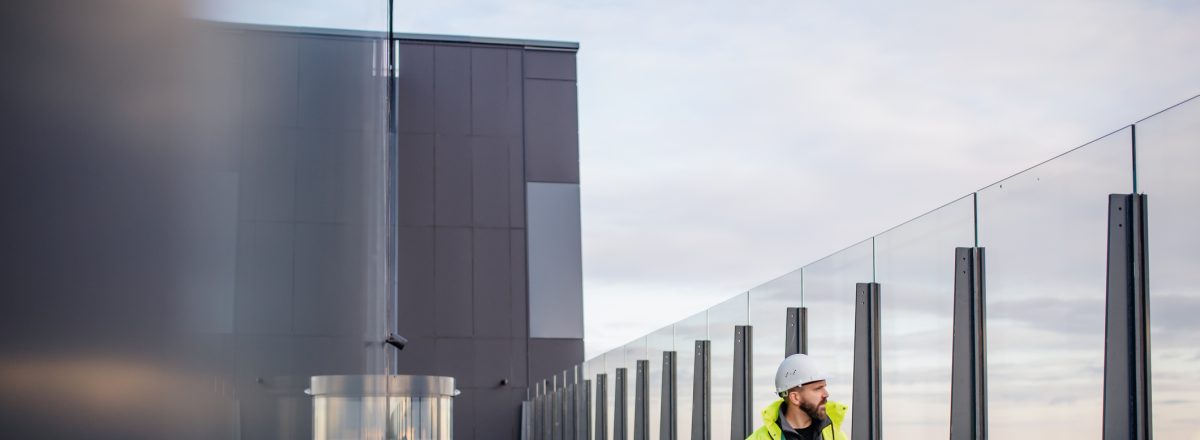Wearable Tech?


In the scurry to better leverage technology in the construction business, don’t be too quick to rule out wearable technology. The options are growing for everything from AR Glasses and VR Headsets to Motion Sensors, Exoskeletons, Safety Vests and more. Though employers may cringe at costs, and employees at use, the arguments for both improved worker safety and the bottom line are strong.
Try It On
While it is impossible to assign hard numbers to the true toll of accidents and fatalities on workers and their families, the statistics say a lot about both the cost to humans and businesses. Meanwhile, research and innovation has greatly improved wearable technology options in recent years, making the argument for putting it to good use strong:
The case for using wearable technology on construction job sites has never been more compelling. The latest data from the Bureau of Labor Statistics (BLS) reports that 1,069 construction fatalities occurred in 2022, a 7.7% increase over the previous year…. OSHA reported a total of 169,200 construction industry injuries in 2021, adding that about 40% of those injuries resulted in missed workdays. What was the cost? According to the Midwest Economic Policy Institute, in human terms, $5 billion was lost in production, family income, and pain and suffering. According to Procore, businesses experienced $7.87 billion in direct workers’ compensation costs. These are only numbers. But how many construction pros do you personally know who have been injured because of job-site accidents? Can you afford to add one more name to that list? This is where wearable technology gets personal. It can make a real difference.
Just as the name implies, wearable technology “consists of digital devices designed to be worn on the body for the purpose of detecting, recording, transmitting or analyzing information.” The possibilities have advanced rapidly over the past ten years, and, among many emerging purposes, wearable tech can now be used to “track bodily movements, read geolocations, monitor physical activities, measure vital information, and determine proper use of equipment based on real-time data relayed from linked devices, such as bulldozers or forklifts.” Specific examples of types of wearable tech now in use on construction sites include:
- Smart helmets
- Boots
- Belts
- Gloves
- Glasses
- Vests
- Pendants
- Exoskeletons, worn to enhance human motions
Teaming for Safety and Success
It’s not very hard to imagine how the careful selection and use of wearable technology can improve both worker safety and business performance. Consider, for example, exoskeletons:
Wearable exoskeletons are robot-like machines worn to augment human strength and performance. Active exoskeletons use actuators to impact human movements; passive exoskeletons use resistance elements, such as springs or cords, to support the wearer’s motor activities. Exoskeletons reduce injuries and stress to the back, arms, or legs. They can effectively assist workers in carrying or lifting heavy items, providing musculoskeletal reinforcement of correct ergonomic movements. For instance, workers wearing active exoskeleton devices may be able to lift heavy tools or materials in tight spaces, avoiding awkward positions caused by excessive loads placed on the body. Lifting belts, or back belts, represent passive forms of the same technology.
One very practical way to begin incorporating wearable technology into a construction business is the use of virtual reality headsets for training. Indeed, as best practices such as thorough hiring processes, on boarding and formalized training programs become more and more key to both recruiting and retaining an effective workforce in construction, consider the role VR Headsets can play:
Virtual reality (VR) headsets that display environments in 3D, stereoscopically projecting images in alignment with the positioning of the wearer’s head or eyes. VR headsets were popularized in gaming applications but have become more commonly used in construction scenarios where a viewer requires a more immersive understanding of some yet-to-be-realized environment, such as architectural renderings. VR headsets have been used to pitch design ideas to clients, increase stakeholder collaboration, or provide immersive safety training. They can allow a client to experience a product before it is finished. Or help to unify a team’s collective vision of a prospective project. Perhaps most important, it can help employees train safely for high-risk activities, such as scaffolding installation or hazardous electrical work.
Partnering For The Win
Teamwork and tech are essential for business success, and Colonial Surety offers a simple tech driven partnership to improve your bidding capacity. Once qualified for The Partnership Account®, you’ll use our power of attorney to issue your own bid bonds, in minutes. Order performance and payment bonds with speed and ease too. Plus, you’ll run your business more efficiently and competitively than ever as you leverage your:
- surety line of credit—in writing;
- private digital dashboard;
- daily snapshot of single and aggregate limits
- ability to update work on hand
Get started right now—and get your free financial scores too:
Pre-Qualify for The Partnership Account® for Contractors
Founded in 1930, Colonial Surety Company is a leading direct seller and writer of surety bonds and insurance products across the USA. Colonial is rated “A Excellent” by A.M. Best Company and U.S. Treasury listed. Let’s connect today: Colonial Surety.


